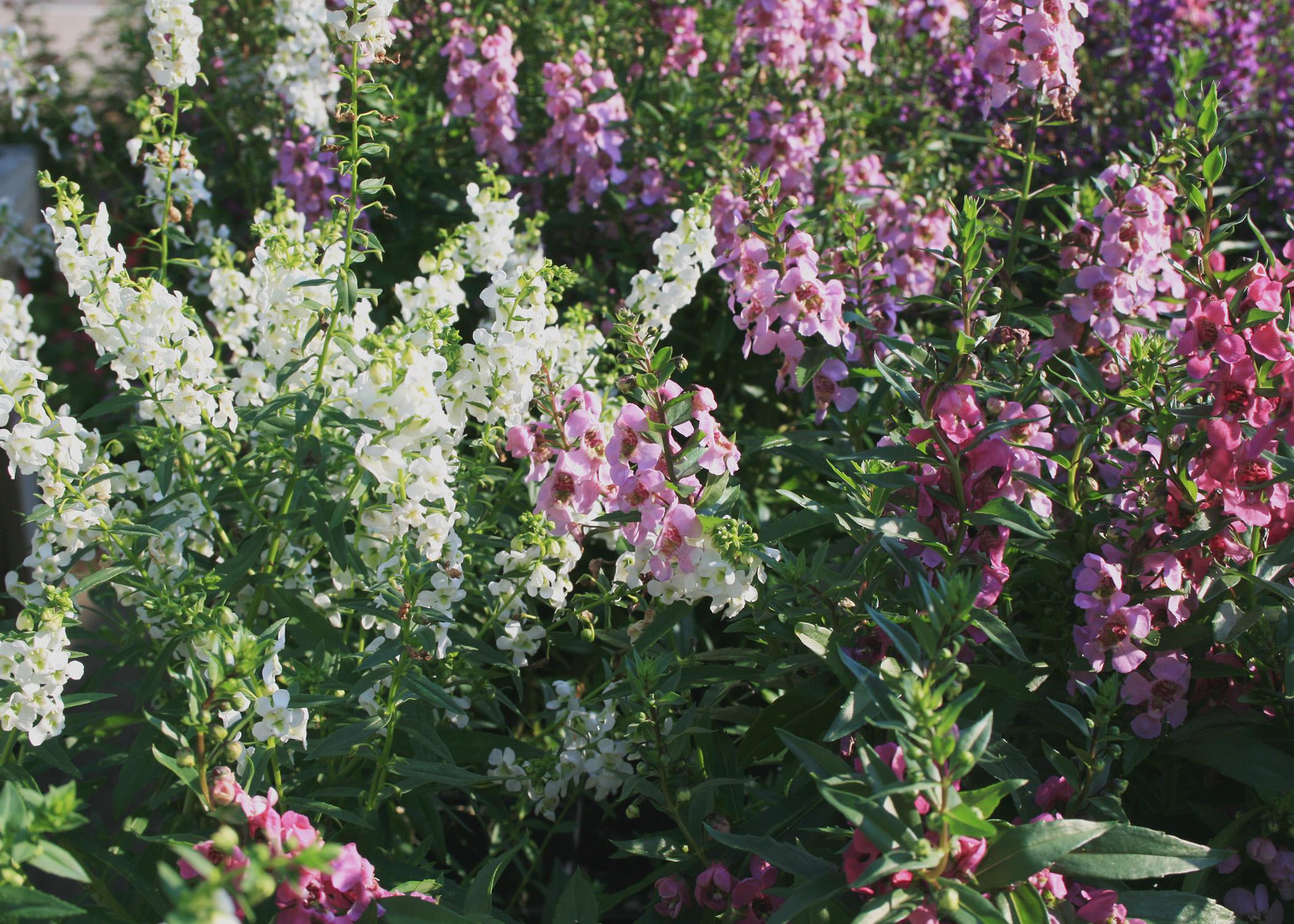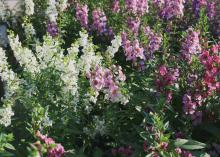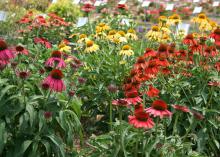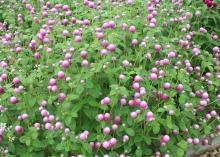Information Possibly Outdated
The information presented on this page was originally released on July 15, 2013. It may not be outdated, but please search our site for more current information. If you plan to quote or reference this information in a publication, please check with the Extension specialist or author before proceeding.
Next spring, plant three flowers for summer color
I’ve been getting a lot of questions from homeowners who want to add some color to landscapes in the middle of this hot and humid summer. My answer brings bad news.
It is really tough to add color at this time of year to in-ground planting beds. To be truly successful, plants for summer color need to be planted in the spring to ensure they establish a good root system before the heat of summer sets in.
Here’s an assignment for the home gardener: Get out your 2014 calendar now and write down the following must-have plants for next summer – Angelonia, Echinacea and Gomphrena.
Angelonia are called summer snapdragons, and they begin flowering in late spring and continue to bloom profusely until frost in the fall. They require very little deadheading. Plants with round flowers dominate the garden world, so the spiky texture of Angelonia flower stalks are welcome additions to any summer garden.
The multicolored Serena Angelonia was selected as a Mississippi Medallion winner in 2007, so you know it has to be summer tough to earn this honor. Flower colors include blues, pinks, violets and white. Serena Angelonia grow to 12 inches tall and spread to 14 inches.
Angelonia come from the hot climates of Mexico and the West Indies. Once established, Angelonia are drought- and heat-tolerant, great attributes for the full sun, hot summer conditions in Mississippi landscapes.
The purple coneflower is a flowering Mississippi-native perennial that can make a statement in your home garden and landscape. Coneflowers are probably my all-time favorite flowering landscape plant.
Purple coneflowers are members of the genus Echinacea, which is derived from the Greek word for hedgehog. This seems like a fitting description of their seeds, which are spiny and prickly.
The plant’s common name comes from the beautiful purple flowers that attract a seemingly endless number of butterflies and bees. A couple of years ago, I counted eight different types of butterflies and bumblebees working on a planting of coneflowers.
Traditional flower colors range from pastel purplish-pinks to deep, dark, vibrant burgundies. All America Selections introduced a fantastic new color series called Cheyenne Spirit for 2013. I think the range of colors from red to yellow and orange, along with the traditional purple, will ensure these flowers find and keep a place in my garden and landscape.
Purple coneflowers are easy to grow in Mississippi gardens. They require little maintenance and actually thrive on neglect. The best place to plant them is in raised beds or bermed areas with good soil drainage.
Some of the best specimens I have ever seen have been planted in commercial potting media in large containers on patios. Purple coneflowers do not like wet feet and will quickly succumb to crown rot during cold and moist winters.
The third plant you should have in your garden for summer color is Gomphrena, which produce flowers from early summer to fall frost. The flowers look like clover and are everlasting and straw-like in texture. The flower heads are actually bracts, which are leaves resembling petals. The small flowers are inconspicuous and only noticeable when the yellow stamens poke out. Flower colors range from white to purple and red.
Gomphrena blooms from spring to frost in the fall, and these plants have relatively few pest problems. It is a strong summer performer that has been named a Mississippi Medallion winner multiple times. All Around Purple was chosen in 2008, followed by Fireworks in 2010.
One of my favorite Gomphrena varieties is the Bicolor Rose, which has a white to rosy-pink coloration. Gomphrena make great cut flowers and have good vase life. Cut stems early in the morning, and pair them with other flowers from your garden.
Gomphrena also make good dried flowers. Tie flower stems in bunches and hang them upside down to dry in an airy room out of direct light. The everlasting flowers will retain their color and are great additions to craft projects and dried flower arrangements.










